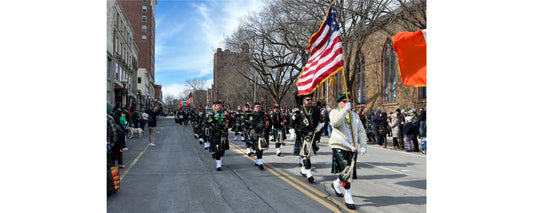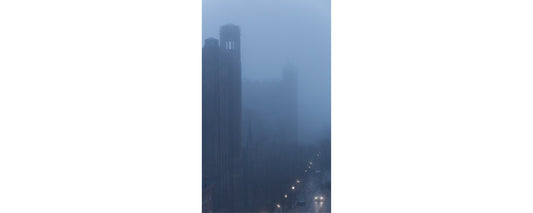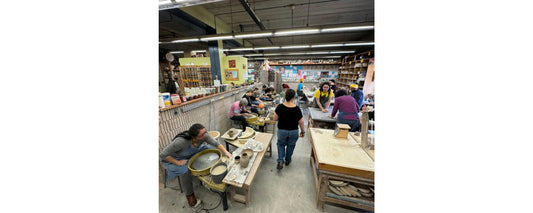Landscape painter Michael Angelis is a grounded kind of guy. “Oil paint is basically dirt,” he says of a medium accustomed to highfalutin treatments. “Anything that’s natural and gritty really lends itself to oil paint.” For subjects, he tends to choose no-man’s lands that most of us rarely think much about: underpasses, construction sites, even piles of dirt. “The pile of dirt by Ikea is one of my favorite things in New Haven.”
While painting what would become some of his best-known works, Angelis set up his easel under stretches of highway, or highway-to-be. Painting blocky concrete and I-beams humming at a frequency 10mph over the speed limit, passersby at street level would stop, perplexed; they couldn’t at first see what in the scene was worth depicting. For Angelis, challenging that mindset is part of the point. “By putting the place in a box labeled ‘art,’ they
According to Marc Augé, a French social theorist, freeways, motel rooms, grocery stores and underpasses aren’t properly construed as “places.” They’re “non-places:” ambivalent areas insufficiently stocked with the familiar attributes of place. Most of these spaces are areas of dislocated utility, like industrial infrastructure or transit lines. In them, communities don’t form, friends don’t meet, bread isn’t broken. We pass over or through, staying no longer than we have to.
sponsored by
Angelis’s art, while not explicitly engaging Augé, is an artistic reaction to the sentiment that these places are somehow less real than the rest of the human habitat. It reveals them as worthy subjects of art and gives us pause to contemplate the meaning they do have, or could have, packing them with painstaking detail many long hours in the making. He describes the work as “hyperrealist;” whereas realism tries to depict the world as it appears to the eye, and photorealism tries to depict the world as it appears to the camera lens, hyperrealism creates plausible new versions of reality, typically distorting or adding something to the painting that is either not really there or the human eye can’t perceive.
Angelis’s chosen mode of distortion is a “flattening” of each scene. Unlike a camera, which focuses at a certain depth of field, Angelis treats everything in his paintings with the same level of intensity, the entire canvas or panel in focus. With needle-like precision, Angelis has a knack for capturing the minutiae of the city’s landscapes in flux.
sponsored by
Indeed, few of his painting subjects look much the same now as they did when he painted them. Angelis freezes vast structures in moments of tumble or rise, but the demolition crews have since done their work and construction crews have terraformed the ruins. As a result, his paintings capture transitional moments in the city’s progression.
Angelis’s studio, in a building he shares with four other artists, is itself a study in urban metamorphosis. Located in Foundry Square, the structure once served as an old munitions plant. Cannonballs were likely forged in the space below his floorboards, according to Angelis. Later it became a strip club. Now a respectable arts destination, the building still retains some of its seedy sheen. During Artspace’s annual City-Wide Open Studios, older men have come into the studio and joked with Angelis: “The pole was right over there. Where are the girls?” If you catch the light off the back door just right, you can read the old signage. “Back Stage Johnny’s: Live Nudes, Videos, Leather Goods, Rubber Goods.”
Outside, he’s surrounded by Augé’s non-places. Parking lots and scenes of raw construction are plentiful. The abandoned English Station power plant, located in the middle of the Mill River, is visible from his back window.
It’s restless. Transitory. Dirty. And we know how Michael Angelis feels about dirt.
Michael Angelis
169 East St, New Haven (map)
Website | Contact
Written by Daniel Shkolnik. Photo 1 by Dan Mims. Photos 2-3 by Daniel Shkolnik.









